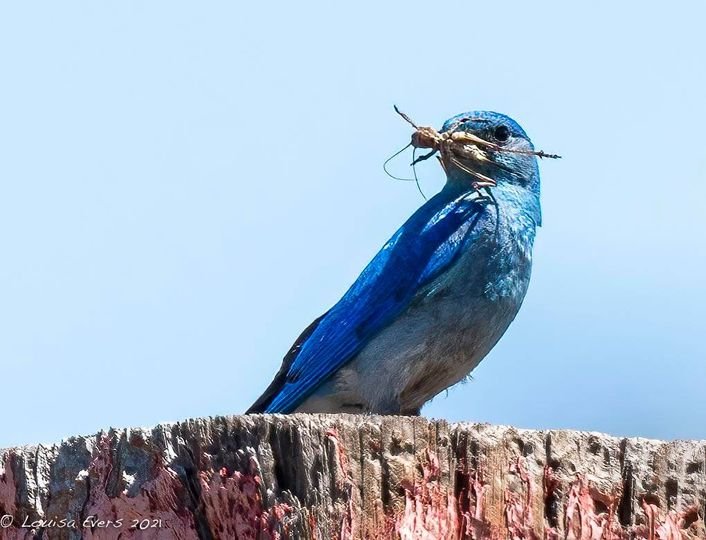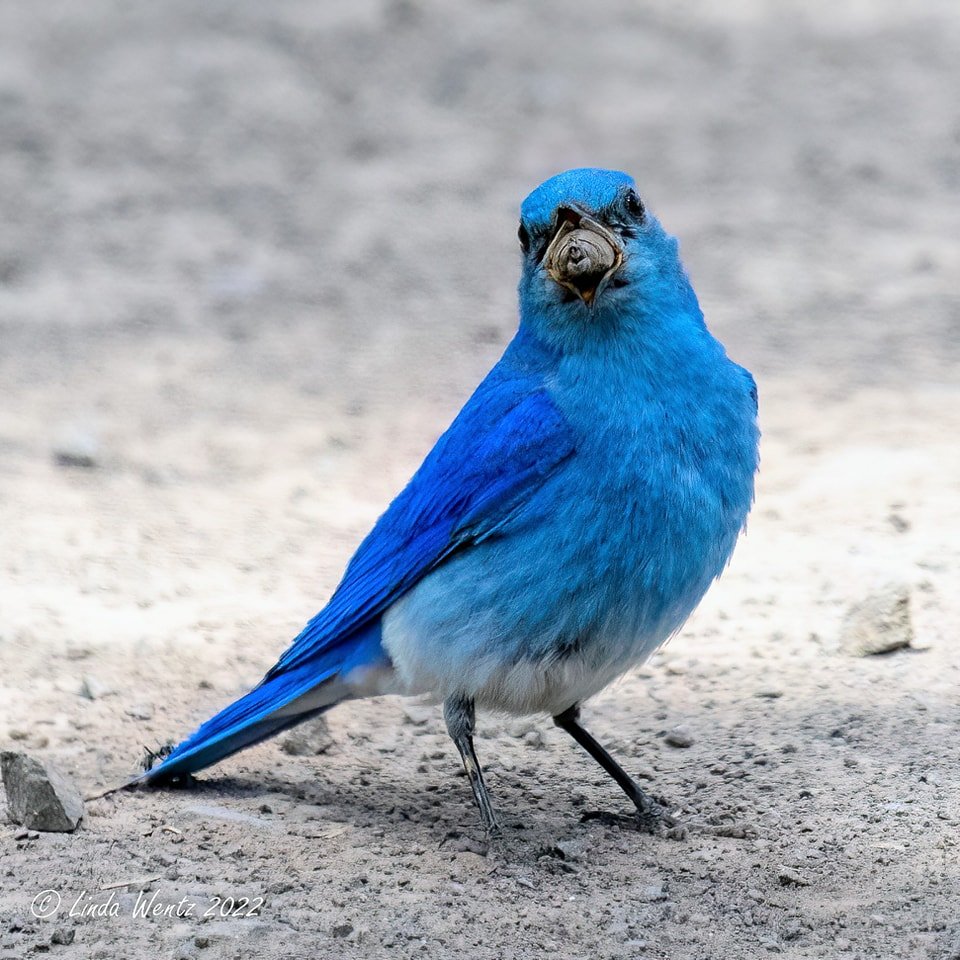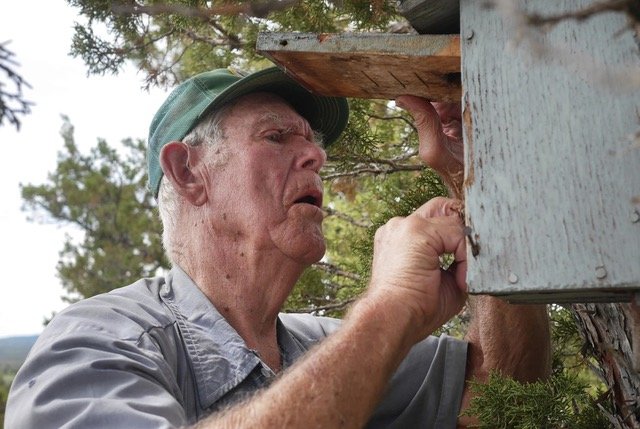Welcome Back Mountain Bluebird
By Bhavana Padiyath, GEAS Guest Blogger
As spring paints the mountains green, a flash of glistening azure catches the eye. For the male Mountain Bluebird, it is the season for a graceful ballet of song, flight, and courtship gestures. He perches prominently on a treetop or fence post, his cobalt plumage shimmering under the morning sun. His serenades are distinctive and melodious - weaving his own creative variations, mimicking other birdsongs and adding improvised flourishes to attract female attention and mark his territory.
North America is the only continent on earth that has bluebirds. Three species of North American thrushes (Turdidae) occupy the genus Scalia - Eastern Bluebird, Western Bluebird, and the Mountain Bluebird. Of the three, the Mountain Bluebird (Sialia currucoides) is perhaps the most iconic. It is the state bird of Idaho (and Nevada) and the inspiration behind the Twitter logo.
Usually nesting at elevations between 7,000 and 12,500 feet, its wintering and breeding grounds extend from Alaska and the Canadian Yukon in the west to Montana in the east, to high-elevation plains all the way to Central Mexico.
“The soft mellow warble of the bluebird, heard at its best throughout spring and early summer, is one of the sweetest, most confiding and loving sounds in nature.”
Male Mountain Bluebird: Ken Miracle
Harbinger of Happiness
Many Indigenous North American tribes, including the Navajo, Apache, and Pueblo, view the Mountain Bluebird as a harbinger of happiness and good fortune. The Hopi people associate the bird with the rising sun, interpreting its bright blue plumage as a reflection of the morning sky and its awakening light. In Pima mythology, the Mountain Bluebird was originally just a plain, brown bird, but through trickery and bravery, earned its vibrant blue feathers, symbolizing transformation and resilience. Its arrival in the spring is seen as a symbol of renewed life, warmth, and the blossoming of hope.
Female Mountain Bluebird: Louisa Evers
Unlike its Western and Eastern counterparts who have a rusty-orange belly, the Mountain Bluebird is more uniformly colored. The male is an iridescent cerulean blue with a lighter underside and white belly and undertail coverts. Females and immature Mountain Bluebirds have duller blue-gray plumage with tinges of bright blue on the wings and tail and a buffy chest. Adult Mountain Bluebirds are slightly larger and thinner-billed than other bluebirds, with longer wings and tails.
Ironically, these sapphire specimens have no blue pigment in their plumage. The cells in their feather barbs absorb all wavelengths of color except blue, which is reflected and scattered, much as we perceive the clear sky.
Team Nest Building
Mountain Bluebirds are secondary cavity nesters, making use of natural or woodpecker-created hollows, holes in cliffs, clay banks or nesting boxes built by humans. Both sexes participate in nest building, meticulously assembling a platform of twigs, grasses, and feathers. The female then lays and incubates a clutch of 4-7 sky-blue eggs, while the male takes to the skies in pursuit of its prey to feed the family.
From perches on trees or fence posts, they scan the surroundings with keen eyes, and upon spotting an insect, launch themselves into a swift, graceful flight. Their diet primarily consists of grasshoppers, beetles, caterpillars, spiders and flies, which they snatch mid-air with impressive accuracy. Living in more open terrain than the other two bluebirds, the Mountain Bluebird’s diet includes more insects than most thrushes. Rather than densely forested areas, they prefer alpine meadows, clearings and pastures where they hover low to snatch their prey, much like kestrels or flycatchers. They also feed on grapes, currants, wild berries and seeds.
Mountain Bluebird with grasshopper: Louisa Evers Mountain Bluebird with cicada: Linda Wentz
Nest Boxes Making Are Making A Difference
Habitat loss due to development, agricultural practices, and climate change poses a significant threat to Mountain Bluebird populations. Conservation efforts like providing nest boxes, restoring natural habitats, and educating the public are playing a crucial role in population stabilization. There simply aren’t enough natural cavities for Mountain Bluebirds. Man-made nest boxes have helped them make a comeback. Driving through the Owyhee Mountains, or between Mountain Home and Fairfield one sees hundreds of bluebird nesting boxes, thanks mainly to conservation enthusiasts like Golden Eagle Audubon Society co-founder Al Larson.
The 102-year Idaho native celebrated as “Bluebird Man,” has spent nearly five decades maintaining hundreds of bluebird nest boxes along these Bluebird Trails. Read about Al’s amazing work. Golden Eagle Audubon Society volunteers are continuing to maintain most of the boxes Al erected. You can follow these instructions if you’d like to build and place a bluebird nest. Remember, they take annual maintenance, so make sure you are ready for the commitment before putting up a bluebird nest box.
“The bluebird carries the sky on his back.”
Al Larson maintaining a bluebird nest box.




